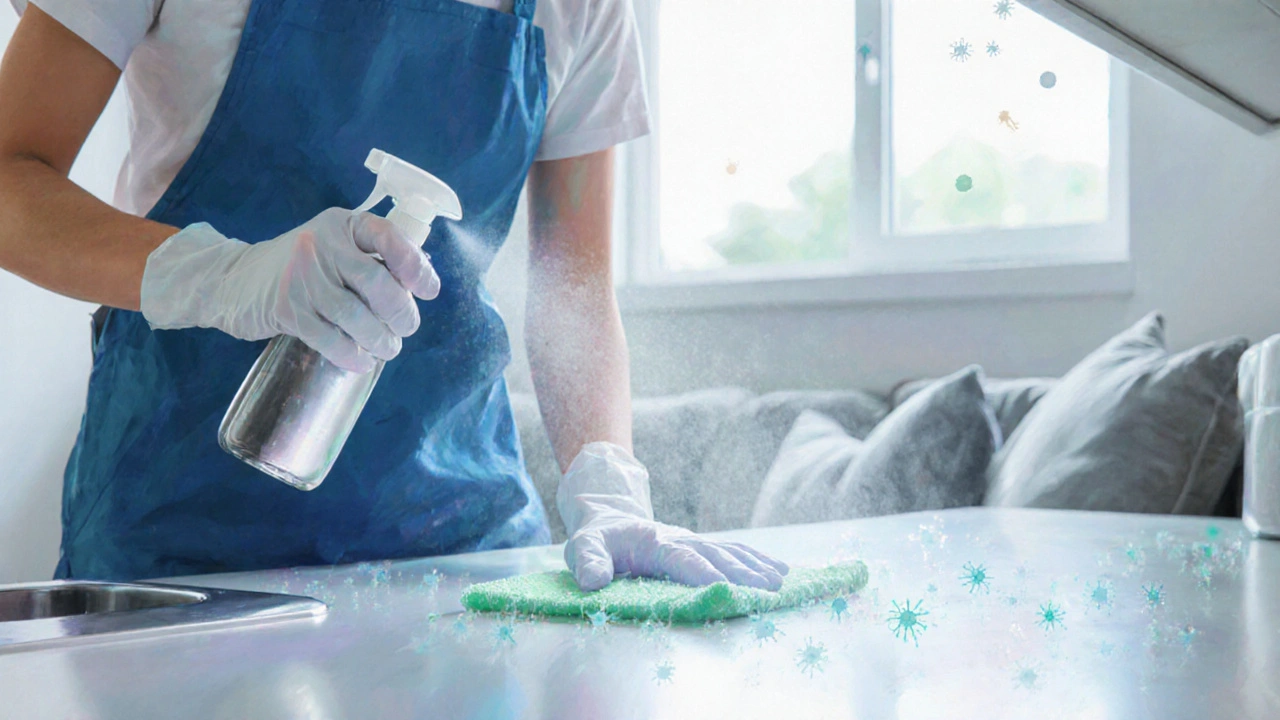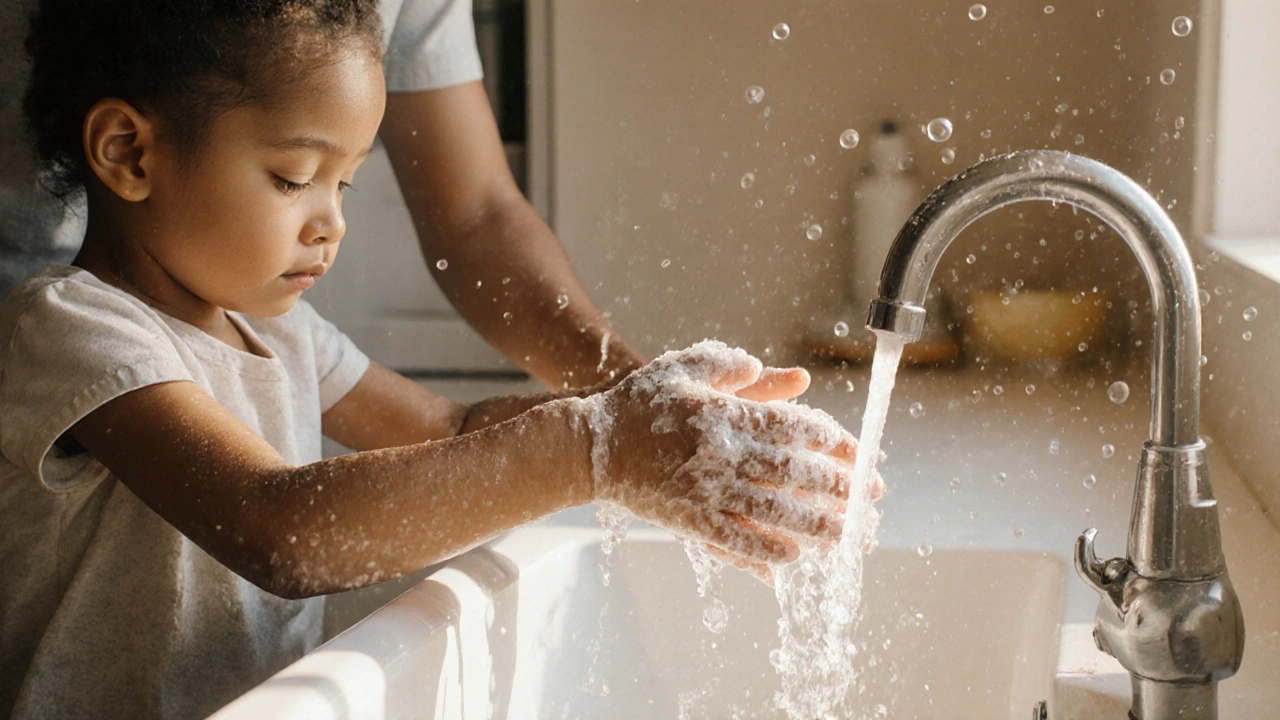When you think about staying healthy, the first thing that comes to mind is often a balanced diet or regular exercise. But the simplest, most powerful tool you already have in your pocket is hygiene. From the moment you wake up to the second you go to bed, the choices you make about cleaning your hands, body, and surroundings can mean the difference between a clean bill of health and a trip to the doctor.
Why hygiene matters more than you think
Hygiene is a set of practices aimed at preserving health and preventing disease by keeping the body and environment clean. It isn’t just a nice‑to‑have habit; it’s a frontline defense against the invisible world of microbes that cause illness. Studies from the World Health Organization show that good hygiene can reduce diarrheal diseases by up to 50% and cut respiratory infections by 30%.
Think about it: every cough, sneeze, or touch leaves a trail of germs tiny microorganisms such as bacteria, viruses, and fungi that can cause disease. If you don’t interrupt that trail, you’re essentially handing a free pass to infection.
Key hygiene practices that actually work
Not all cleaning routines are created equal. Here are the practices backed by research and why they matter.
- Hand washing the act of cleaning hands with soap and water for at least 20 seconds. Proper technique removes 99% of the microbes you pick up from surfaces.
- Personal hygiene daily routines such as bathing, oral care, and nail trimming that reduce microbial load on the body. Regular showers keep skin flora balanced, lowering skin infections.
- Cleaning high‑touch surfaces (doorknobs, light switches) with disinfectants every day.
- Using tissues or elbows to cover coughs and sneezes, then discarding the tissue immediately.
- Wearing clean clothing and changing socks daily to avoid fungal growth.
How pathogens spread: the hidden routes
Understanding the paths germs travel helps you block them more effectively. The main routes are:
- Direct contact: Touching an infected person’s skin or bodily fluids.
- Indirect contact: Picking up pathogens from contaminated objects - known as fomites.
- Aerosol transmission: Inhaling tiny droplets expelled when someone talks, coughs, or sneezes.
Each of these routes involves a pathogen any organism that can cause disease, including bacteria, viruses, and parasites. By disrupting the chain at any point, you stop the infection before it takes hold.
Hand washing vs. sanitizer: which is better?
Both have their place, but they’re not interchangeable. The table below breaks down the key differences.
| Factor | Hand washing | Alcohol sanitizer |
|---|---|---|
| Effectiveness against most viruses |
Excellent (removes and kills) | Good (kills but doesn’t remove dirt) |
| Time required | At least 20 seconds | 15-30 seconds |
| Skin impact | Gentle if using mild soap | Can dry skin with frequent use |
| Ideal use case | When hands are visibly dirty | When soap & water unavailable |
| Cost per use | Low (tap water & soap) | Higher (bottled product) |
In most settings, wash with soap first, then keep sanitizer handy for quick top‑ups.

Building lasting hygiene habits at home and in the community
Consistency is the secret sauce. Here’s how to turn good practices into routine.
- Place a visual cue (like a colorful sign) near sinks to remind everyone to wash hands for 20 seconds.
- Turn hand‑washing into a game for kids - sing "Happy Birthday" twice while scrubbing.
- Schedule a weekly deep‑clean of shared spaces (kitchens, bathrooms) and assign tasks to family members.
- Encourage workplaces or schools to install hand‑soap dispensers at every entrance.
- Keep a stock of disease‑control kits sets that include soap, sanitizer, disposable tissues, and disinfectant wipes for emergencies.
Common pitfalls & myths that sabotage infection control
Even well‑meaning people fall into traps. Spot the red flags before they cost you health.
- Myth: "Cold water kills germs."
Reality: Warm water helps soap dissolve oils, making removal easier. - Myth: "If I’m not sick, I don’t need to wash hands."
Reality: Asymptomatic carriers spread up to 60% of infections. - Pitfall: Skipping the nail‑under area.
Solution: Scrub nails with a nail brush. - Pitfall: Using the same towel all week.
Solution: Change towels after 3‑4 uses and wash in hot water.
Quick hygiene checklist for daily infection prevention
- Wash hands with soap for 20 seconds before meals, after bathroom use, and after returning home.
- Use sanitizer when soap isn’t handy, ensuring at least 15% alcohol content.
- Shower or bathe at least once a day, paying attention to underarms, groin, and feet.
- Disinfect high‑touch surfaces nightly.
- Replace toothbrush every 3 months and clean it with water after each use.
Frequently Asked Questions
How long should I wash my hands to be effective?
At least 20 seconds - about the time it takes to sing “Happy Birthday” twice. Make sure to scrub palms, backs of hands, between fingers, and under nails.
Is hand sanitizer as good as soap and water?
Sanitizer works well when hands aren’t visibly dirty, but it can’t remove certain chemicals or heavy soil. Soap and water remain the gold standard for thorough cleaning.
Can wearing gloves replace hand washing?
Gloves can protect your hands, but they become contaminated quickly. They must be changed frequently and never replace regular hand washing.
What’s the best way to clean reusable water bottles?
Wash with hot, soapy water and a bottle brush daily. Occasionally run a cycle in the dishwasher or soak in a diluted bleach solution (1 tsp per litre) for 5 minutes.
How often should I change my toothbrush?
Every three months, or sooner if the bristles become frayed. Replace after an illness to avoid re‑infection.





14 Comments
Justin Channell
Every time you wash those hands you’re building a tiny shield around you 😊
Basu Dev
Hand hygiene is more than a habit; it is a cornerstone of public health that has been reinforced through countless epidemiological studies.
When you scrub your palms for at least twenty seconds you are physically removing the lipid envelope that many viruses rely on to remain infectious.
The mechanical action of rubbing, combined with the surfactant properties of soap, disrupts the protein structures of bacterial cell walls.
In regions where clean water is scarce, the use of alcohol‑based hand rubs provides a viable alternative, though it does not substitute for the removal of visible soil.
Research from the World Health Organization indicates that consistent hand washing can cut diarrheal disease incidence by nearly half.
Similarly, respiratory infections see a reduction of about thirty percent when hand hygiene protocols are rigorously applied.
The effectiveness of these measures is amplified in high‑traffic environments such as schools, hospitals, and public transport.
Regular disinfection of high‑touch surfaces like door knobs, elevator buttons, and smartphone screens creates a secondary barrier that limits fomite transmission.
Personal grooming practices, including daily nail trimming and proper foot hygiene, further reduce the microbial reservoir on the body.
Changing socks and undergarments daily prevents fungal overgrowth, which is a common source of skin infections.
Incorporating visual cues, such as colorful reminder stickers near sinks, has been shown to increase compliance among both children and adults.
Turning hand‑washing into a brief game-singing the birthday song twice-helps embed the practice into routine.
It is also essential to remember that hand sanitizer, while convenient, does not replace washing when hands are visibly dirty.
The alcohol concentration must exceed fifteen percent to ensure adequate viral inactivation.
Overuse of sanitizer can lead to skin dryness, so moisturizers should be part of the regimen.
Ultimately, a layered approach that combines thorough hand washing, strategic surface cleaning, and mindful respiratory etiquette forms the most resilient defense against infection.
Krysta Howard
Stop believing cold water kills germs; warm water simply helps soap break down oils, and skipping it invites microbes to set up camp 🛑
Elizabeth Post
Consistency is key, making hand‑washing a habit can really lower your risk of getting sick.
Brandon Phipps
When you look around any household you’ll notice that the bathroom sink is often the most neglected spot despite being a hotspot for bacteria.
That neglect translates directly into higher infection rates, especially for families with young children.
Kids are naturally exploratory and love to touch everything they can get their hands on, so the surfaces they encounter first become vectors for germs.
A daily schedule that includes wiping down the faucet handles and mirror edges can dramatically cut down the transmission chain.
Over time that routine becomes second nature, turning a conscious effort into an automatic reflex.
yogesh Bhati
Ever think that each wash is like a tiny rebirth? The suds wash away not just dirt but also the lingering doubts of yesturday, leaving a fresher you to face the day.
Akinde Tope Henry
Our hands are our first line of defense.
Brian Latham
Looks solid but kinda obvious.
Barbara Todd
It's interesting how many people forget the simple step of cleaning under their nails, even though that tiny area can hold a surprising amount of bacteria.
nica torres
Let’s keep those hands sparkling clean! 💪🧼 Every wash is a win for our health.
Dean Marrinan
Oh sure, because we all love spending half an hour scrubbing hands like we’re auditioning for a soap commercial – but hey, if it keeps the germs at bay, why not enjoy the sudsy drama? 🎭✨
Oluseyi Anani
From an ethical standpoint, maintaining personal hygiene is a duty we owe to our community; neglecting it not only harms oneself but also endangers the vulnerable who rely on shared spaces.
Jeremy Wolfe
Exactly, building that shield every day makes the difference between staying healthy and catching a cold, so keep at it and you’ll thank yourself later.
SHASHIKANT YADAV
Seeing the routine reminders pop up around the house really helps turn hand‑washing into a habit rather than a chore 😊